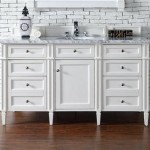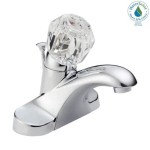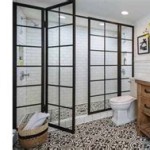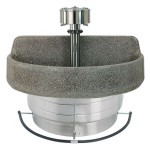How Do I Prep My Bathroom Walls For Painting?
Painting a bathroom can dramatically improve its appearance and create a fresh, clean feel. However, the success of any paint job relies heavily on the preparation work. Bathrooms present unique challenges due to the presence of moisture and humidity. Proper preparation ensures the paint adheres correctly, provides a smooth finish, and resists peeling and mildew growth.
Essential Steps for Bathroom Wall Preparation
Preparing bathroom walls for painting involves several crucial steps to guarantee a professional, long-lasting result. These steps ensure the paint bonds correctly to the surface, creating a smooth and durable finish.
1. Clean the Walls Thoroughly
Cleaning is the first and most crucial step in prepping bathroom walls. Dirt, grime, soap scum, and mildew can prevent the paint from adhering properly. A thorough cleaning using a suitable cleaning solution is necessary to remove these contaminants and provide a clean surface for the paint to bond to.
2. Repair Any Damage
Inspect the walls for any damage, such as cracks, holes, or peeling paint. These imperfections must be addressed before painting to achieve a smooth and flawless finish. Minor cracks can be filled with spackling paste, while larger holes might require patching with drywall compound.
3. Sand the Walls Smooth
After the repairs have dried completely, sand the affected areas and the entire wall surface to create a smooth and even base for the paint. Sanding removes any bumps or imperfections, ensuring a professional-looking finish. Use fine-grit sandpaper for a smooth, even surface.
4. Remove Hardware and Fixtures
Remove all hardware, such as towel bars, toilet paper holders, light switch covers, and outlet covers. Removing these items prevents them from being painted and allows for a clean and precise paint job around their edges. If removal is not possible, carefully cover them with painter's tape.
5. Protect Surfaces with Painter's Tape
Apply painter's tape to protect areas that should not be painted, such as window frames, door frames, baseboards, and the edges of the bathtub or shower. This creates clean lines and prevents accidental paint splatters on these surfaces. Ensure the tape is firmly pressed down to prevent paint seepage.
6. Prime the Walls
Applying a primer specifically designed for bathrooms is crucial, especially in high-moisture areas. Primer helps seal the surface, prevents stains from bleeding through, and provides a better bonding surface for the paint. Choose a mildew-resistant primer for optimal protection against moisture damage.
7. Allow Sufficient Drying Time
After applying the primer, allow ample drying time according to the manufacturer's instructions. This ensures the primer has fully cured and provides the best possible base for the paint. Rushing the drying process can negatively affect the final paint job.
Choosing the Right Cleaning Solutions
Selecting the appropriate cleaning solution is vital for effectively preparing bathroom walls. A mixture of warm water and a mild detergent is often sufficient for general cleaning. For more stubborn stains, such as mildew, a solution of bleach and water (typically a 1:10 ratio) can be effective, but always ensure proper ventilation and wear protective gloves.
Addressing Mildew Issues
Mildew is a common problem in bathrooms due to the high humidity. Before painting, it's crucial to address any existing mildew thoroughly. A bleach solution can kill mildew spores, but it's essential to clean the area thoroughly afterward to remove any residue. A dedicated mildew remover can also be used following the manufacturer's instructions.
Repairing Wall Imperfections
Repairing any wall imperfections is crucial for achieving a smooth and professional-looking finish. Small cracks and holes can be filled with spackling paste, while larger holes may require patching with drywall compound. Allow the repairs to dry completely before sanding and priming.
Importance of Sanding
Sanding the walls after patching and before priming creates a smooth and even surface for the paint to adhere to. This step is crucial for achieving a professional finish and preventing the paint from highlighting any imperfections. Use fine-grit sandpaper for the best results.
Selecting the Right Primer
Choosing the right primer is essential for a successful bathroom paint job. A primer specifically designed for bathrooms, preferably with mildew-resistant properties, is recommended. The primer seals the surface, prevents stains from bleeding through, and provides an optimal bonding surface for the paint.
Protecting Adjacent Surfaces
Protecting adjacent surfaces, such as window frames, door frames, and fixtures, is essential to prevent accidental paint splatters. Use painter's tape to carefully mask off these areas before painting. Ensure the tape is firmly pressed down to prevent paint seepage.
Ventilation and Safety
Proper ventilation is crucial when working with cleaning solutions, primers, and paints. Open windows and use a fan to ensure adequate airflow. Wear protective gear, such as gloves and a mask, to prevent inhalation of fumes and skin irritation.
Proper Disposal of Materials
Dispose of all cleaning solutions, paint containers, and other materials according to local regulations. Do not pour leftover paint down the drain, as this can contaminate the water supply. Contact your local waste management authority for proper disposal guidelines.

How To Paint Bathroom Walls Like A Professional Benjamin Moore

How To Paint A Bathroom 15 Steps With Pictures Wikihow

How To Prepare Walls For Painting Dap Global

How To Paint A Bathroom With Sprayer Green Decor

From Ugly To Wow How Paint Bathroom Shower Tile

How To Prepare Walls For Painting Dap Global

How To Prepare Inerior Walls For Painting

Best Type Of Paint For Bathrooms 2024 Guide Forbes Home

How To Prep Walls For Painting My Best Tips Tricks Driven By Decor

How To Paint Bathroom Walls Like A Professional Benjamin Moore
Related Posts







